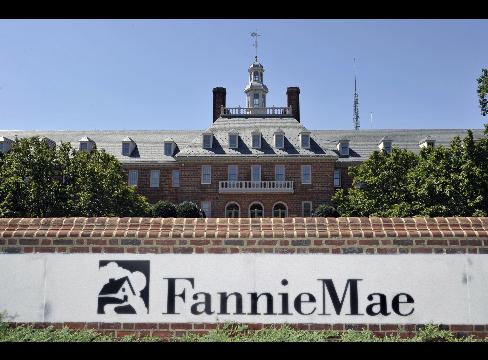
Sept. 9 (Bloomberg) — When the history is written on the collapse of Fannie Mae and Freddie Mac, it will go down in the annals of corporate scandals as one of the greatest accounting scams committed in broad daylight.
All anyone had to do to know the government-guaranteed mortgage financiers were insolvent was read their financial statements. You didn’t need a trained professional eye to discern this open secret, only a skeptical one.
Just last month, Fannie and Freddie said their regulatory capital was $47 billion and $37.1 billion, respectively, as of June 30. The Treasury Department now says it may have to inject as much as $200 billion of capital into the two companies. Nothing much changed at the companies in that span. They just couldn’t get the government to keep up the ruse any longer.
To have believed those capital figures, you first needed to accept two key assertions by the companies. The first was that the mortgage-market meltdown was a temporary blip. The second was that Fannie and Freddie both would be wildly profitable for decades to come, once the blip was over.
These weren’t the only fairy tales Fannie and Freddie told. They’re just the ones that had the biggest impact on their calculations of regulatory capital. Had Fannie and Freddie ever backed off these predictions, they would have been officially insolvent, even under the government’s lax standards.
Until late last week, though, nobody with any authority was willing to call them on it. That’s why Fannie and Freddie were able to avoid a government takeover for so long.
Accounting Magic
By the time the government moved in, Freddie had accumulated $34.3 billion of paper losses on mortgage-related securities that it excluded from its calculations of regulatory capital. All Freddie had to do was say the losses were “temporary,” and they could be kept out of the company’s capital figure. It didn’t seem to matter how ridiculous the claim was.
Fannie played the same game. As of June 30, it had $11.2 billion of supposedly temporary losses on mortgage-related securities, which it excluded from its calculations of core capital, as the government calls it. (A better name would be “kore kapital,” like the imitation krab sticks on a sushi bar menu.)
The so-called temporary losses had the warped effect of inflating a line item on both companies’ balance sheets called deferred-tax assets. The bigger the companies’ losses got, the more these tax assets grew, based on the premise that someday the companies would be able to use the losses to offset future income-tax bills.
The catch is that if a company doesn’t expect to have enough profits to use these assets, it’s supposed to record a valuation allowance on its balance sheet to reduce their size. Freddie and Fannie didn’t let this requirement get in the way. They never set up any allowances.
Dreams of Billions
So, as of June 30, when Freddie said it had deferred-tax assets of $18.4 billion, it supposedly envisioned about $50 billion of future taxable income that, in its judgment, would probably materialize in the face of the worst financial crisis since the Great Depression.
Ditto for Fannie. It claimed to have $20.6 billion of deferred-tax assets as of June 30.
The companies’ delusions didn’t stop there. In their financial disclosures, both companies represented that the fair- market value of their tax assets was billions of dollars more than what they were allowed to show under generally accepted accounting principles.
All of this was malarkey, of course. And it was all disclosed, even if the companies’ explanations weren’t always clear.
Gatekeepers Doze
There were lots of gatekeepers who could have stopped this sooner and chose not to. Freddie and Fannie had boards with outside directors and audit committees, though the evidence that they did their jobs is scant.
Freddie’s auditor, PricewaterhouseCoopers LLP, could have stopped it, and didn’t. The same is true of Fannie’s auditor, Deloitte & Touche LLP.
The Securities and Exchange Commission’s chairman, Christopher Cox, had other priorities. He was too busy this summer trying to prop up the companies’ stock prices by chasing short sellers away from their shares.
James Lockhart, the director of the Federal Housing Finance Agency, kept telling the public this summer that Fannie and Freddie were adequately capitalized. He must have known this was a joke, assuming he had bothered to read their quarterly reports.
All the while, Ben Bernanke at the Federal Reserve and Hank Paulson at Treasury offered the same warm assurances about the companies’ capital. They surely knew better, too.
Don’t cry for investors who lost money on the companies’ stocks either. If they didn’t do any research or didn’t understand what they owned, the people they should blame are themselves.
The reality is that investors should withhold their faith in the government officials who regulate our financial markets. That’s not cynicism. In the parlance of securities law, it’s a risk-factor disclosure.
The moral of this story: You’re on your own, folks, and there’s more where this came from.
(Jonathan Weil is a Bloomberg News columnist. The opinions expressed are his own.)
Last Updated: September 9, 2008 03:52 EDT
Commentary by Jonathan Weil
Source: Bloomberg